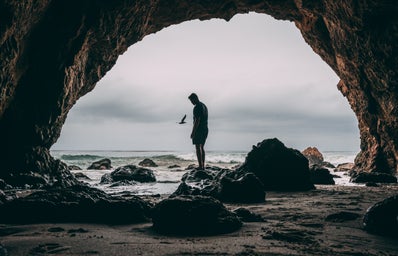What do you imagine when you think about our Paleolithic hunter-gatherer ancestors? Typically, you would probably think the men go out and do the hunting to provide for his family while his mate stays inside a cave to take care of the kids. She may also do a bit of gathering plants, a small way of her trying to provide for her family as well. However, new research and archeological finds state the opposite. Although the Paleolithic woman did gather and make clothing, their role in the survival of their tribe thousands of years ago was a lot more complex than we think.
Hunting
Now to get the “Men hunted and women gathered” trope out of the way, a lot of Paleolithic cultures did have women hunt. According to the research study article, “Woman the hunter: The archaeological evidence,” during the Upper Paleolithic period, it was more of an “egalitarian” society. Egalitarian is the principle that all are equal and all deserve equal opportunity. They also found there is very little evidence that suggests women and men were assigned specific gender roles. This is unlike today’s most modern-day patriarchal societies. In fact, there is a lot of female hunter burials dated to the Paleolithic age that have been recently discovered. According to “The Myth of Man the Hunter: Women’s contribution to the hunt across ethnographic contexts,” there is an archeological find of a young woman’s grave dated to about 9,000 years old with an assortment of hunting tools — especially those used in killing big game. Keep in mind though this is just one example. There are more and more archeological sites revealing this. I reccomend looking it up on your own if you’re interested.
Procreation and childbirth
A 15,000-year-old relief sculpture found in a cave in France, known as Roc-Aux-Sorciers, gives evidence that women back then knew more about their birth cycles then previously thought. According to Rock Art Blog, it describes three female figures showing the stages of childbirth. These carved works are rather nude and for sensory sake, I will be describing them as discretely as I can. The first of the three carvings shows a nude woman from the top of the torso to the bottom of the pelvis. She has a round belly and a line that comes down from her belly button, indicating that she is pregnant. The second one shows the same thing accept she has no round belly. The third one shows what looks to be her breastfeeding her child. It also shows pictures of bison, which has the same gestation period as a human female (nine months). This would indicate that women knew how long pregnancies could take. This may have also helped young women track when they could become mothers.
Child rearing and Motherhood
The “Secrets of the dead: Lady Sapiens” documentary, talks about how young mothers dealt with raising children. They suggest that one important member of the family — grandmothers — helped new mothers while they went out hunting. They gained this evidence through the example of modern day hunter-gatherer societies that understood the importance of the elder women’s contribution to the education of the children through their wisdom. In the video, researcher Kristin Hawks describes what it was like living amoung the Hadza tribe in Tanzania, Africa. She states, “I was spending hours in the hot sun every day with these old ladies. I mean with other people as well, but with these old ladies who were doing what is the heaviest kind of resource acquisition, foraging for these deeply buried tubers that can be more than a meter deep.” The researchers also began to realize the weights of children who were weaned was directly correlated to how much the grandmothers would forage. This could give us a hint as to how grandmothers thousands of years ago helped provide food for their grandchildren.
Artists
Most would think that men did most, if not all, of the pictures and carvings on cave walls. However, a study conducted by anthropologist Dean Snow suggested otherwise. The article “Women leave their handprints on the cave wall,” goes through a steb-by-step process in measuring the hands on certain cave walls. “The first step in the process showed that only 10 percent of the handprints on cave walls in Spain and France were left by adult males. The second step indicates that 15 percent were placed by adolescent males, leaving 75 percent of the handprints female.” Although it’s unclear whether or not certain figurines, such as the Venus figurines found all over Europe and Asia, were created by either sex, who’s to say that women didn’t create those either?
Although these are just a few examples, it goes to show that women did a lot more in her role regarding the wellbeing and spirituality of their family and community.

